April Gardening Tips: Let the Blooming Begin
Last updated 4/5/2022 at 5:30pm
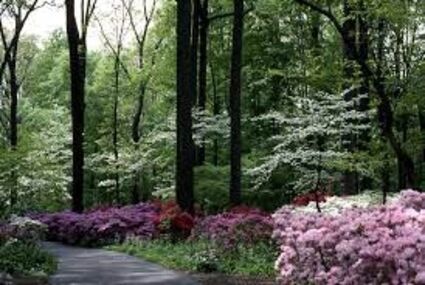
Azaleas and Dogwood trees (Image courtesy of Pinterest)
Greetings my fellow gardening enthusiasts! Our wait is finally over, Spring is erupting into bloom all around us. Azaleas, daffodils, and numerous other spring plants are bursting into bloom. Now is the perfect time to enjoy our wonderful scenery and landscapes here in Southeast Texas, but it also a great time to getting outside into your own yard to create your own personal paradise. There are several gardening tasks to do during the month of April, and here a few items for your list.
Vegetables: Growing vegetables at home has become a national trend which continues to increase yearly. People are growing fruits and vegetables, for many different reasons in their home garden and landscape. So, you may wonder, what vegetables are best planted now? You'll want to hurry and get your tomato transplants and plant them now. Larger transplant sizes will begin producing tomatoes sooner, which is good because once summers' heat kicks in and temperatures rise, tomatoes will stop setting fruit. Now it is also the perfect time to plant peppers which unlike tomatoes, will not tolerate cool air or soil temperatures and will be permanently stunted when exposed to cooler conditions. Pepper plants are perfect for tucking into sunny spots in the landscape, flower beds, or planting in containers. Not only are they highly productive, but they are also colorful, especially if you allow the fruit to remain on the plant longer, until it reaches its mature color. But remember when planting peppers that unlike tomatoes, peppers do not like to be buried deeply when transplanted.
There are numerous other vegetables which can be planted in April which include bush and pole beans, cucumber, eggplant, cantaloupe, sweet potatoes, pumpkin, summer and winter squash, Swiss chard, lettuce, arugula, Pak choi, and watermelons, so plant your families' favorites. You'll want to wait until the end of April for warmer soil temperature to okra and Southern peas. For the largest yields, fertilize vegetables by side-dressing (add fertilizer in a channel beside the plant) every couple of weeks. Begin fertilizing a month after transplanting or seeding, as this will keep all vegetables, including tomatoes and peppers, growing vigorously for a bumper crop.
A large area is not required to grow vegetables. If you feel your yard is a bit small for a traditional garden spot, utilize containers to create micro-gardens. Any type of container which can hold soil can work, but it must have drainage holes and be a minimum of 3 gallons, preferably larger as the bigger the container, the better for your plants. Quality potting soil is must, and refrain from using soil from your yard. Grow dwarf or bush varieties to concentrate production, train plants vertically using stakes or trellises. Remember, just as in a traditional garden, the more full, direct sun the better! Container gardens need a bit more attention and will require more frequent watering, as the soil tends to dry out faster. Container gardens also need repeated additions of fertilizer which will compensate for more frequent irrigation. Add slow-release fertilizer to the potting mix and supplement with bimonthly applications of a water-soluble fertilizer.
Fruit Trees and Berries: It's best to avoid temptation and not to purchase bare-root fruit trees now, even if they are a fantastic bargain! You'll want to look for fruit trees which are container grown, as they will establish themselves into your landscape and provide the best results. Easy berries and fruit trees to grow in southeast Texas include blueberries, blackberries, figs, and Japanese persimmons, to name a few.
Lawns: If you want to fertilize your lawn, April is the month to begin fertilizing lawns. The ideal time to apply fertilizer is after you mow green, actively growing grass (not weeds). I suggest mowing the lawn once or even twice before applying fertilizer. Early to mid-April is a good target date for St. Augustine and common Bermuda. Delay fertilization of Centipede until May. For the best results, have your soil tested for pH and fertility before applying fertilizer. Contact your local extension office for guidance on capturing lawn soil samples and where to send the samples. Soil analysis cost is minimal, $10-15 and the results will provide you the information necessary to make decisions on proper lawn care, Soil testing information is available from every county Extension office, or on the web at http://soiltesting.tamu.edu and look for the "Forms" link.
Flowering Plants: Many summer flowering and colorful foliage plants are best planted now. There are many to choose from including annuals, perennials and bulbs, corms, and tubers such as gladiolus, caladiums, and dahlias.
Annuals- flowers include Amaranthus, celosia, cleome (spider flower). cosmos, marigold, portulaca, zinnia, and gomphrena. All of which can be sown directly in the beds where they are to grow. Seeded areas must remain moist until seeds germinate then thin when plants are large enough to transplant, to minimizing crowding. For a wonderful gift donate surplus plants to friends, neighbors, relative, plant them in another are or pot them into a container. To minimize and prevent diseases in your flower and vegetable beds, rotate the types of plants grown in the same location from year to year. For example, do not plant begonias or impatiens in the same spot every year. Utilize different, unrelated plants which adds variety to your landscape. Experiment with a new plant you haven't tried before. Annuals for shady spots include New Guinea impatiens, coleus, perilla, Persian shield, chicken gizzards (Iresine), caladiums, nicotiana, annual salvias, begonias, and torenia (wishbone flower).
Perennials- are wonderful plants for the garden, with a wide assortment providing structure, form, and color, and without the need of replanting every year. There are perennials for every landscape situation. Roses are available this month in bud and bloom in 2- or 3-gallon pots. Antique and shrub roses are sold in 1 gallon or larger containers and are usually grown on their own root stock rather than being grafted.
Trees and Shrubs: April is also a good month to add trees and shrubs to the landscape. Resist purchasing attractive nursery plants which don't fit in with your overall landscape plan. Otherwise, your yard can become quickly overgrown, crowded or look haphazard. The key is preparation, so do it right from the onset, my suggestion is to spend your time and hard-earned money on bed preparation for shrubs and flowers! They'll be there a long time and you want to do it right from the beginning, so mix in a lot of organic matter like aged compost, peat moss or coconut coir. All good gardening should begin with a soil test, as it will tell you which nutrients to add, for the type of plants you plan to grow. Here's to Happy Gardening!
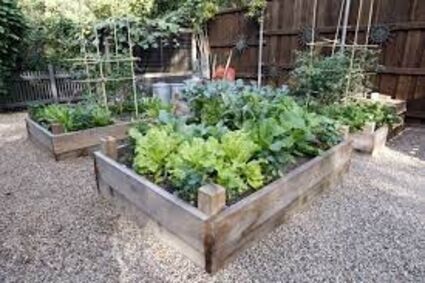
Raised vegetable beds (Image courtesy of Dallas News)
If you have specific gardening questions or need more information, contact the Orange County Master Gardeners Helpline: (409) 882-7010 or visit our website: https://txmg.org/orange, Facebook: Orange County Texas Master Gardeners Association or Email: [email protected].







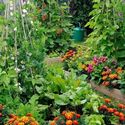

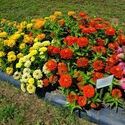
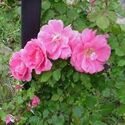
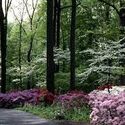

Reader Comments(0)